One of the worst things that could happen on one of your fishing trips is your rod joints sticking. What causes this? How do you prevent it from happening? How do you fix the sticking joints? These are some questions that we are going to answer for you today. There are always other ways and other opinions than what we provide you, so you may have friends, family, or a mentor that will have some ideas that we do not cover here.
“Work is for people who don’t know how to fish!” Author Unknown.
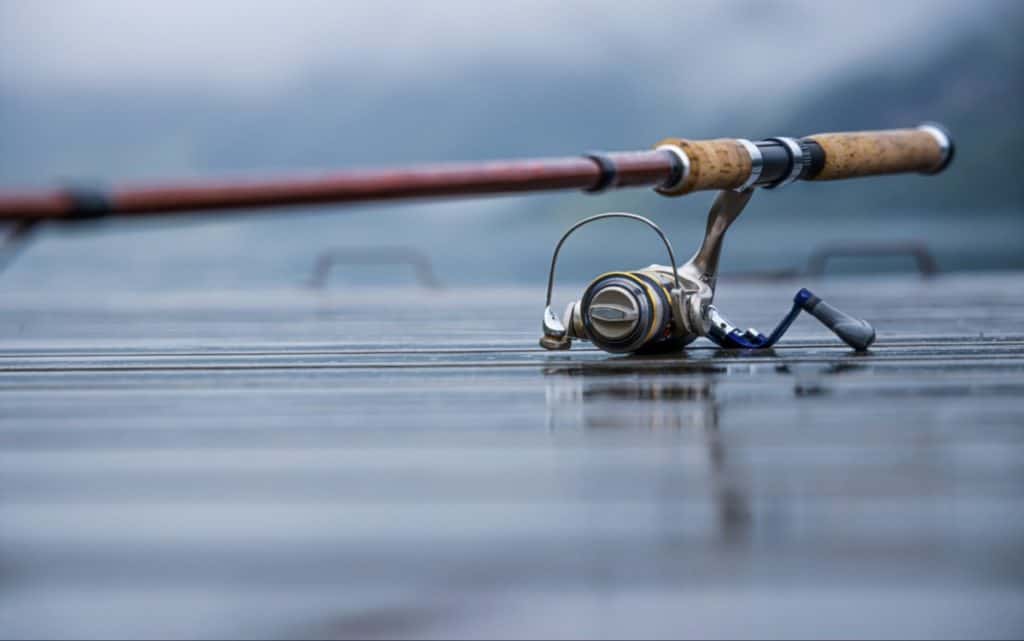
A joint (or ferrule) is an important part of your fishing rod. They are narrow rings, usually made of metal, and they prevent the end of a handle or stick from wearing out or breaking. There is a male and a female joint (ferrule) on every rod that is made, as long as it is 2 pieces. When you put your rod together you should have a 0.5cm – 1cm gap. The best way to put your rod together is slowly twist it together. Never shove or try to ram it together.
The main reasons for the sticking joints on your fishing rod are dirt, sand, excessive saltwater, and other debris. To keep your joints from sticking, your best bet and the most recommended solution is to clean your pole after every trip especially if you mostly fish in saltwater. Make sure that you store it in a clean, dry place; preferably covered.
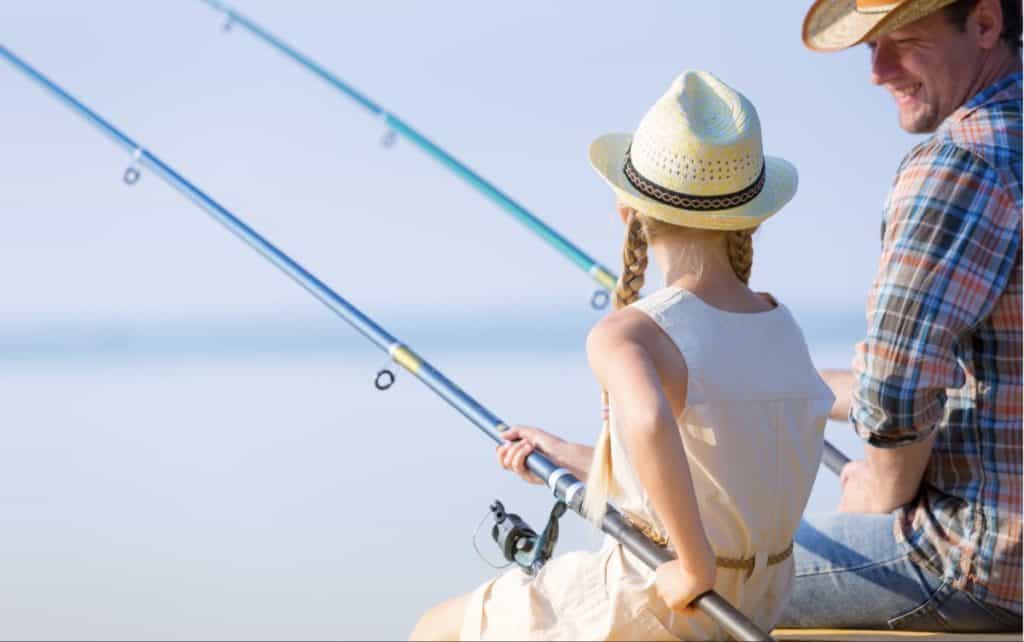
There are many reasons why your joints can stick, as we mentioned above, and there are just as many ways to get them apart. Some are recommended, some are highly disagreed with, some work and some do not work. You could put 20 fishermen in a room and they would all have a different solution to fishing rod joints that are stuck. There is no real right or wrong way to get them unstuck. It is going to be trial and error. What works for you may not work for the next guy, and visa versa. Let’s get into a little more detail on the things that are making the joints stick on your fishing rod.
Excessive water, heat, and saltwater can expand the male section of your rod overtime and cause them to swell a bit and get ‘stuck’ together. A small grain of dirt or sand, salt, or any other debris that gets into the joints will make them tough to get apart at the end of the season.
“Even a fish wouldn’t get into trouble if he kept his mouth shut,” Author Unknown.
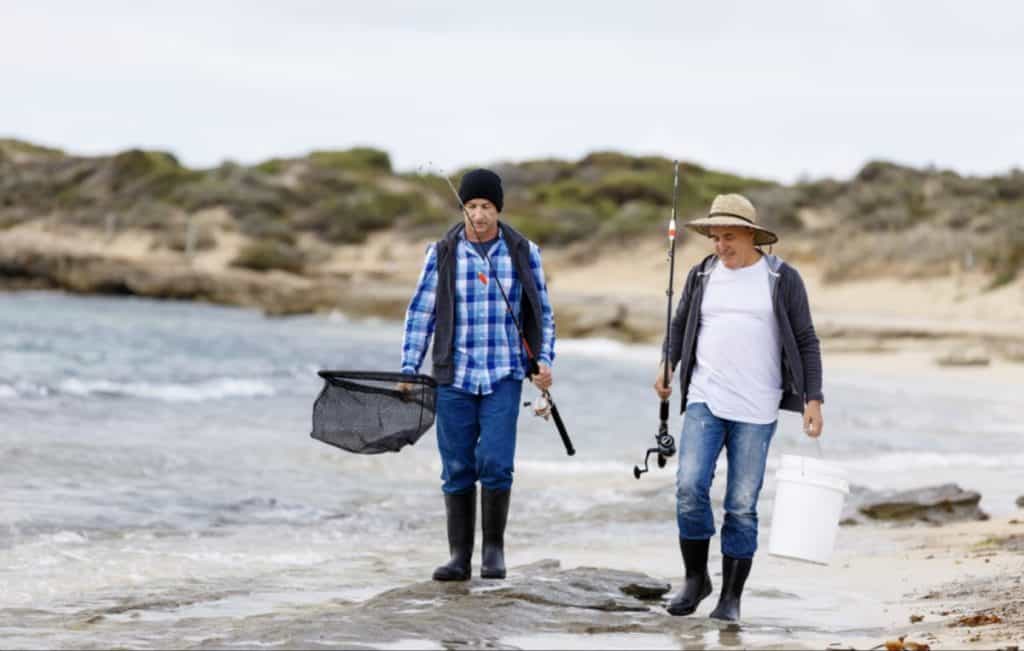
Let us now talk about a few of the ways that you can get your fishing rod joints unstuck.
One of the first things that most people do is try to pull their rod apart. A lot of fishermen keep some kind of pads or rubber gloves in their tackle box just for this issue. Be very careful how hard and what direction you pull because your pole could bend or twist in the wrong direction and crack or even break.
If pulling alone doesn’t work, you may need to tag team the issue with a friend. Kind of like playing tug-of-war. Avoid the eyelets (guides) to ensure they do not get broken off. To try to unstick your joints with a friend; both of you need to put a hand on each side of the joint (as you would if you were working alone). This gives you double the pull power on both sides of the rod. Some fishermen will tell you that this is the worst way to get your rod apart. Because the pole will not be pulled apart completely straight and more times than not you are going to end up with a broken rod. Especially if it is a light spinning rod or a fly fishing rod.
“There are two types of fisherman – those who fish for sport and those who fish for fish,” Author Unknown.
Some anglers have tried the hot/cold method and swear by it. Many will heat up the “female” side of the rod (joint) in an attempt to make it swell or expand, allowing you to easily remove the male joint. This has worked for a few fishermen, but it may not be quite enough for your fishing rod.
You can give WD-40 a shot. Let it soak into the 2 joints for a few minutes and you may be able to slide your rod apart. This is the least risky way to conquer stuck joints, but it doesn’t seem to have a very good success rate.
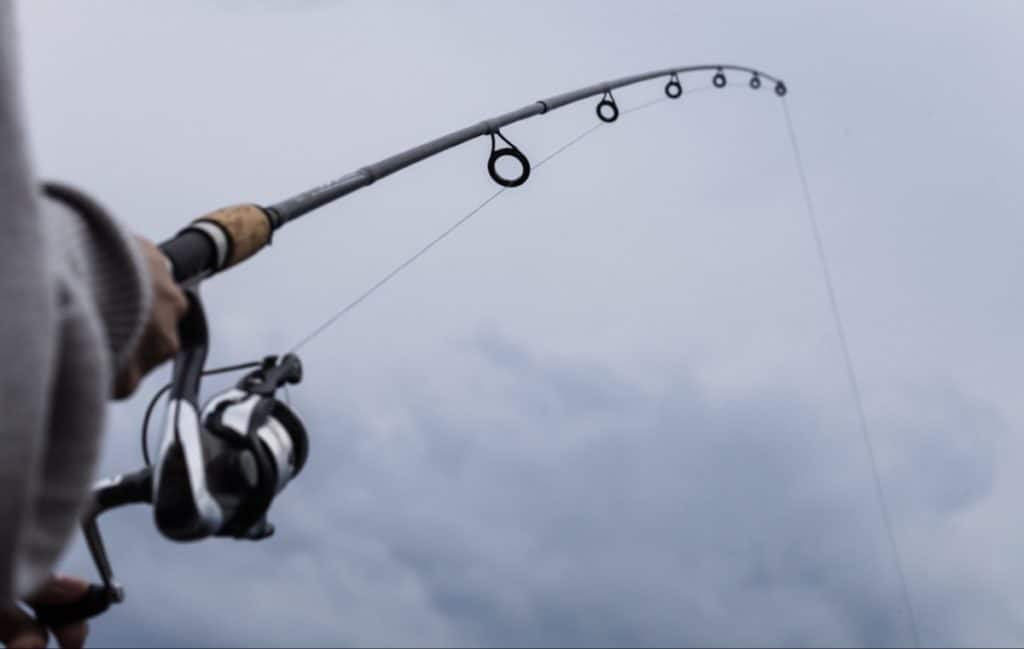
The next method that some anglers attempt is to cool down both sides of the joints, believing it will loosen the rod. Some of the easy ways to accomplish this; place a bag of ice (or a bag of frozen veggies) around the joint, or leaving your rod outside on a cooler night. As with the other suggestions, this has worked for some but not for others.
Once you get your rod unstuck, be sure to clean out both joints very well. Depending on how often you go fishing and how often you fish in saltwater, you are going to want to clean your pole on a regular basis. We are going to give you a few ways to lubricate your rod, and ways to transport and store your rods at the end of the season to prolong the joints from getting stuck.
Some of these are going to seem a bit odd, but they are said to work, by many fishermen. One of the ways to lubricate the male joint is to run the joint up and down on the side of your nose, or threw your hair a few times. Odd? Yes! But the natural oils in our skin and hair are the perfect lubricant for your rod joints. It will make the rod slide together easily and come apart just as easy.
“‘Carpe Diem,’ does not mean ‘fish of the day,’” Author Unknown.
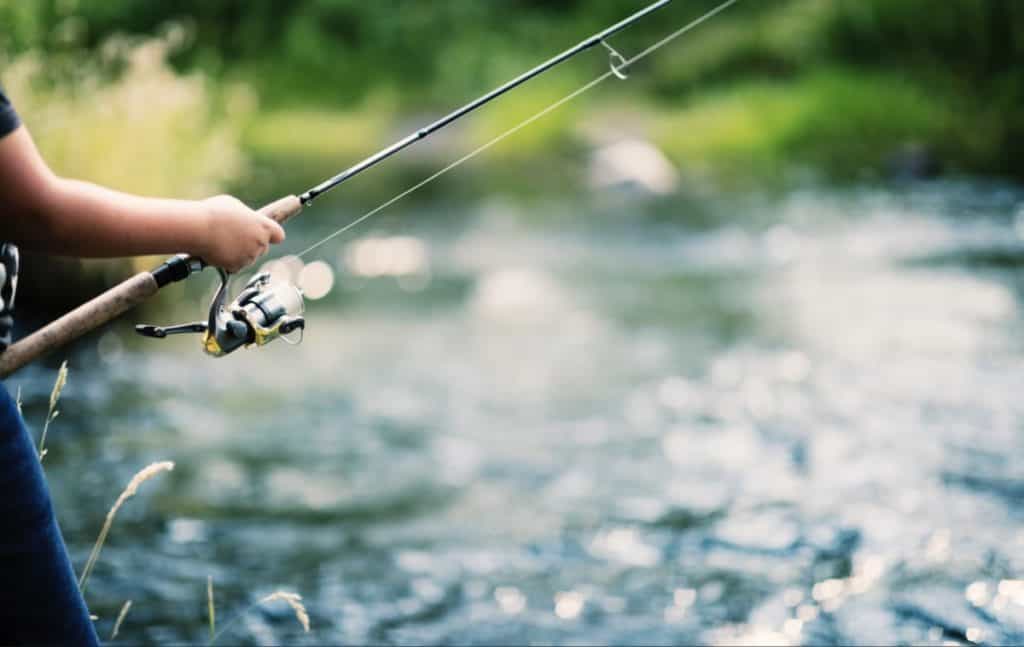
The ultimate way to lubricate your fishing rod joints is to use ferrule wax, which comes with the purchase of some fishing rods. You can also use a candle and run it along and around the male joint for lubrication before you slide the joints into place.
Here are some tips to care for your fishing rods, how to transport them safely, clean them at the end of the fishing season, and the best way to store them in the winter.
General Care:
- Never hang lures or hooks from the guides (eyelets). This can scratch the surface of the guides and believe it or not affect your casting. It can also cause issues with your line, if the guide isn’t changed right away.
- Do not let your lures bang on the tip of your rod by reeling it in all the way.
- Never strike your rod on or against something strong or hard.
- Do not ‘high stick’ or lift the rod past a 90 degree angle when fighting a fish on the line.
Transporting your rods:
- Do not set or lay anything heavy on them
- Keep rods and tackle/other fishing equipment separate
- Do not store them, while transporting, where they will be in straight UV light for long periods of time
You want to transport your rods carefully. This prevents any debris from accumulating in or around the joints. Laying something heavy on the pole can weaken the joints. Keeping all your equipment separated will keep the rod and guides from getting any kind of abrasion damage. Humidity is also a huge factor in your fishing rod joints sticking.
“Nothing makes a fish bigger than almost being caught,” Author Unknown.
Cleaning your rod:
- You want to wash the rod with hot soapy water and allow it to dry completely.
- Clean the joints well. Wipe down the male ferrule and apply a little bit of wax or other lubricant. Take a Q-tip and clean out the inside of the female joint, making sure there is no dust, dirt, or debris left behind.
- Check all of your guides for scratches, and replace them on the spot. Scratches in guides could cause issues with your line, like snagging and even breaking.
Storing your rods:
- DO NOT lean the rod against the wall or in a corner against the wall. Overtime, this will cause an unwanted bend in your rod.
- DO use some kind of rack to lye your poles on, keeping them up off of the ground to avoid being kicked or stepped on.
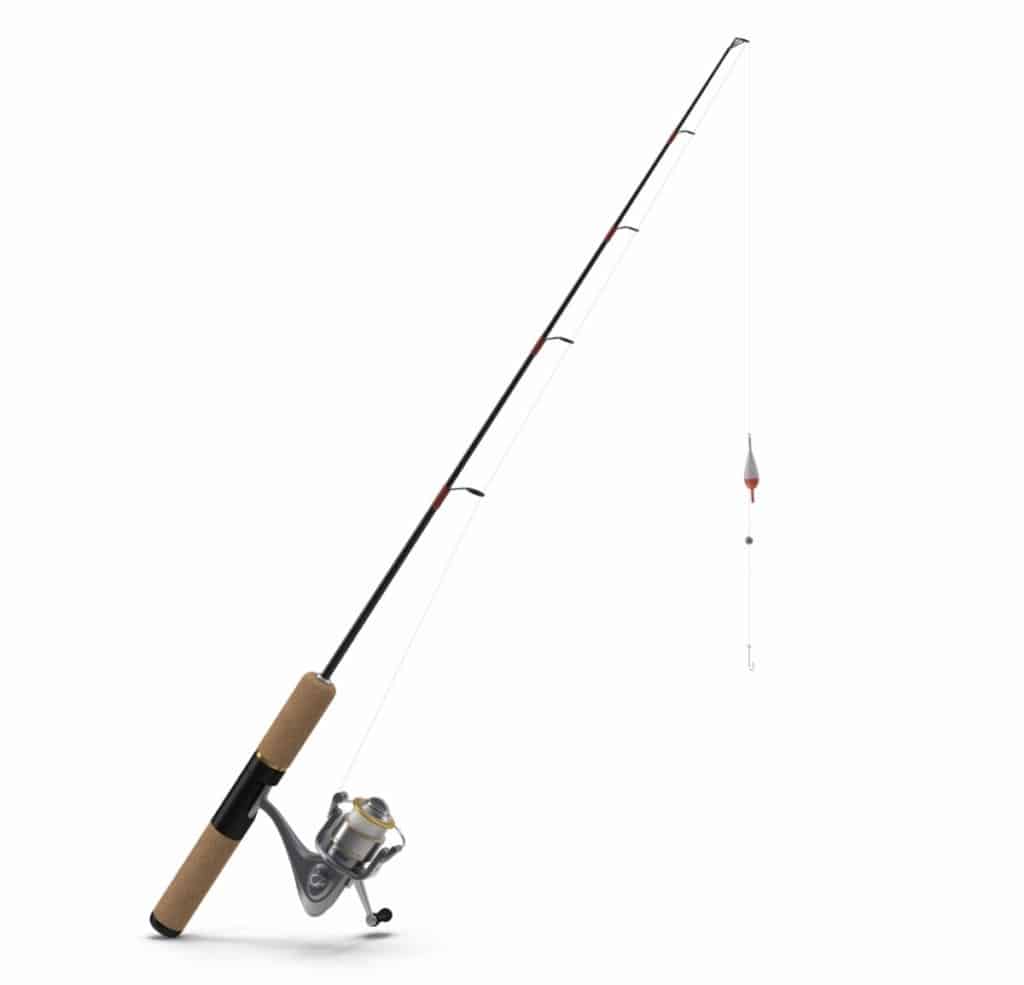
There you have it, my fellow anglers. Why fishing rod joints stick, ways to get the fishing rod joints unstuck and things to do to prevent it from happening in the future. I hope this was a successful and helpful article for you and I hope that this never happens to you, as it can be a terrible situation. Unfortunately if none of the suggestions work, and none of your friends/family have any solutions or suggestions, you are going to be stuck spending money and buying a new rod. Just remember, depending on how often you go fishing and how often you fish in saltwater, that will determine how often you should take your pole apart and clean it. Getting on dirt, dust, debris and salt out of the joints. Until next time, happy fishing!

